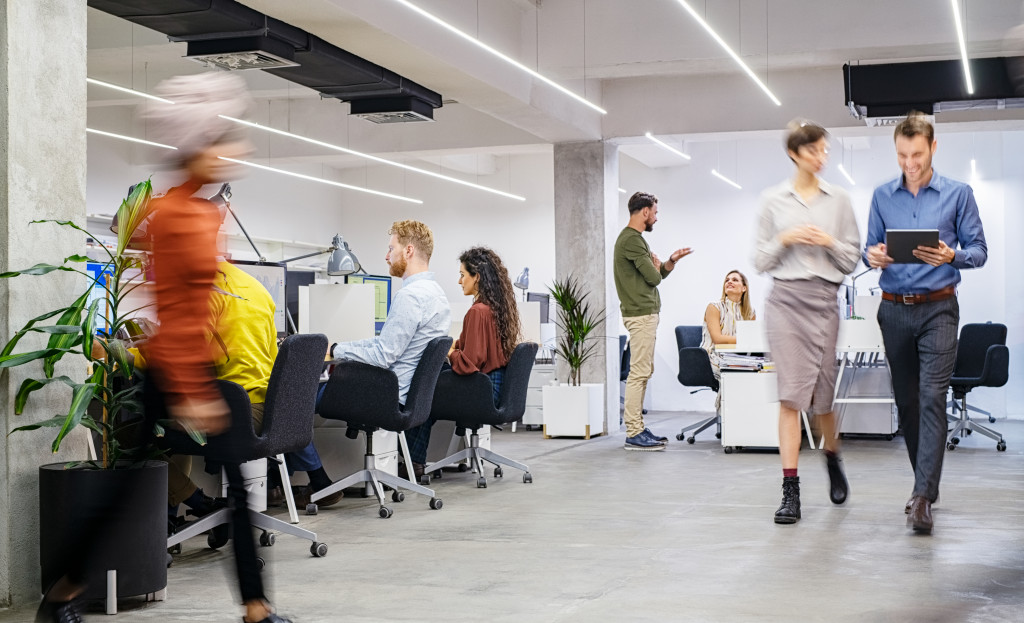- Smart building automation systems monitor and control energy consumption, adjusting lighting and temperature and tracking energy usage.
- Biophilic design promotes productivity and well-being by integrating natural elements and using sustainable materials.
- Providing outdoor spaces for employees improves mental health and increases productivity upon returning to work.
- Implementing commercial reverse osmosis systems ensures access to clean drinking water and reduces plastic waste.
The world is evolving every day, and with the continued technological advancements, it is important to incorporate these changes in offices to improve efficiency and productivity and reduce environmental impact. Building a modern office building powered by advanced technology has become increasingly popular in recent years. This blog post will highlight some of the innovative technologies that can be used to create a future-proof building that is energy-efficient and tech-driven.
Smart Building Automation System
The first technology that comes to mind when thinking about building a modern office building is the smart building automation system (BAS). This system monitors the building’s energy consumption by controlling the heating, ventilation, and air conditioning (HVAC), lighting, and security systems. Through the use of sensors and software, the BAS can automatically do the following:
Adjust Lighting According to Natural Light
The BAS can optimally adjust the lighting in response to the levels of natural lighting present in the building. It does this by employing light sensors that gauge the quantity of natural light and adjust the artificial lighting accordingly. Consequently, this not only creates a more comfortable work setting by avoiding too bright or dim lighting but also significantly reduces energy consumption that otherwise would be wasted on unnecessary lighting.
Regulate Temperature
Another key aspect of BAS is its ability to effectively regulate temperature within the building. By integrating intelligent thermostats and sensors, the system can detect the number of people in a room, their activity level, and the external weather conditions. With this data, it can auto-adjust the HVAC system to maintain an optimum temperature that maximizes comfort and productivity while also enhancing energy efficiency.
Monitor Energy Usage
A crucial feature of the Smart Building Automation System is its capacity to monitor and analyze energy usage in real time. By consistently tracking the energy consumption of various systems, such as lighting, heating, and cooling, it provides valuable insights into areas of inefficiency. This critical data enables facility managers and building owners to make informed decisions about energy usage, helping to identify opportunities for reducing power consumption and thereby lowering operating costs, all while promoting an environmentally friendly workspace.

Biophilic Design
Biophilic design is a concept that focuses on creating a connection between nature and the built environment. Integrating nature into the design of the building can create a relaxed and healthy atmosphere that can improve both productivity and employee well-being. Here are some tips to follow:
Bring in Natural Elements
Incorporating natural elements such as green walls, indoor plants, and natural lighting can create a calming and aesthetically pleasing workplace. These elements not only improve air quality but also promote relaxation, reduce stress levels, and increase creativity and focus.
Provide Access to Outdoor Spaces
Giving employees access to outdoor spaces, such as rooftop gardens or courtyards, provides a much-needed break from the confines of an office environment. Research has shown that spending time outdoors improves mental health and can lead to increased productivity upon returning to work.
Use Sustainable Materials
When designing a future-proof office building with biophilic design principles in mind, it is essential to use sustainable materials. Choosing eco-friendly options like bamboo flooring, reclaimed wood, and recycled materials not only reduces environmental impact but also creates a healthier indoor environment for employees.

Use Reverse Osmosis for Water Filtration
Incorporating an efficient commercial reverse osmosis system for water filtration in an office building can contribute significantly to the health and well-being of the occupants. Clean drinking water is fundamental for maintaining good health, and reverse osmosis systems are renowned for their ability to effectively remove impurities.
This technology operates by forcing water through a semi-permeable membrane, eliminating contaminants and providing access to fresh, clean water straight from the tap. This not only ensures that employees have reliable access to safe drinking water but also aligns with the environmentally conscious objectives of a future-proof office building.
Furthermore, by eliminating the need for bottled water, an office building can become more sustainable and reduce plastic waste. This small change can have a significant impact on the environment and contribute to creating a healthier and greener workspace.
Building a modern office building powered by advanced technology is the future of smart building design. The integration of smart building automation systems, biophilic design, and sustainable water filtration technology can create a future-proof building that not only promotes efficiency and productivity but also contributes to environmental sustainability. By incorporating these innovative technologies, you can create a better working environment for both employees and the planet.






